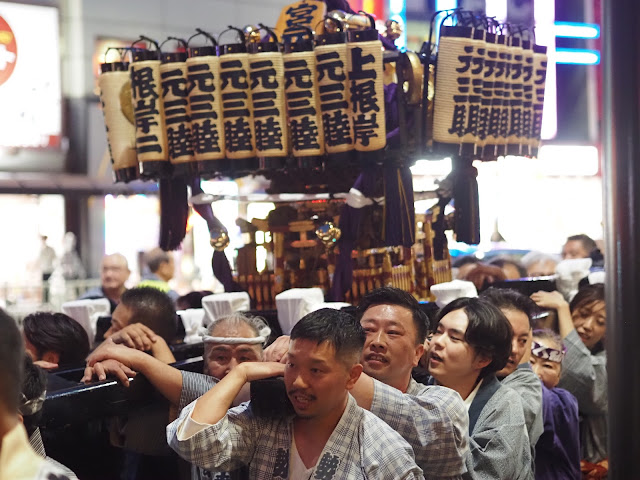The Toden Arakawa line
More rain today. Let's talk about trains.
People who like to ride trains in Japan are known as nori-tetsu. Those who like to photograph trains are called tori-tetsu. In a city that has been knitted together by a dense rail network for over 100 years, there are lots of both.
The automobile, which has damaged most of the world's cities in ways that are still revealing themselves, killed Tokyo's once-sprawling streetcar system.
The city's 40 light-rail lines were blamed for auto traffic congestion and phased out in the early 1970s. The Toden Arakawa line lives on, however. Far from the city's major tourist areas, it runs for almost eight miles. It is operated by Toei, the municipal transit bureau, and is a major reason why I love staying in northeast Tokyo.
The railcar pictured here a rose-red 8800 series tram. You can tell by the number 8802 on the face. There are five red ones, ten in total.
Here's an impossibly handome blue 7700 series car. The body is from the 1950s. It has been updated with a fantastic retro livery and is one of eight 7700 tram cars. Three of them are blue.
One of two 9000 series railcars in Toei's fleet passes the Nichome platform.
A yellow 8900 series (introduced in 2015) passes an orange 8800 at Nichome Station.
Another angle of the same 8900 crawling by an old wooden house. Just the face and body stripes are colored.
Passengers get on at Kuyakushoma Station.
A tori-tetsu squats on the tracks to get a low angle shot. He had a serious rig; I wonder if he's famous.
"Fear the day when the sound of a train no longer moves you," wrote the French poet Appolinaire. Ten years ago the Toden Arakawa line reawakened my interest. I'm tempted to say it makes me nostalgic for a time I never knew, but that's not exactly true.
Arriving at the Gare du Nord with my family in 1973, I remember taking note of train passengers' amazing luggage: suitcases held shut by coathangers, boxes tied up with ropes.
European train travel in early adulthood deepened my appreciation. The exhilaration of departure, followed by a happy dullness. The apprehension of arrival. The food and beer. I miss it all.
In his novel "Norwegian Wood," set in the 1960s, Haruki Murakami tells the story of Toru Watanabe, a man whose heart aches as he recalls his time as a university student in Tokyo.
The melancholic Toru climbs aboard a Toden Arakawa rail car.
"I sat in the last seat and watched the ancient houses passing close to the window. The tram almost touched the overhanging eaves, snaking its way through this private back-alley world."











Comments
Post a Comment